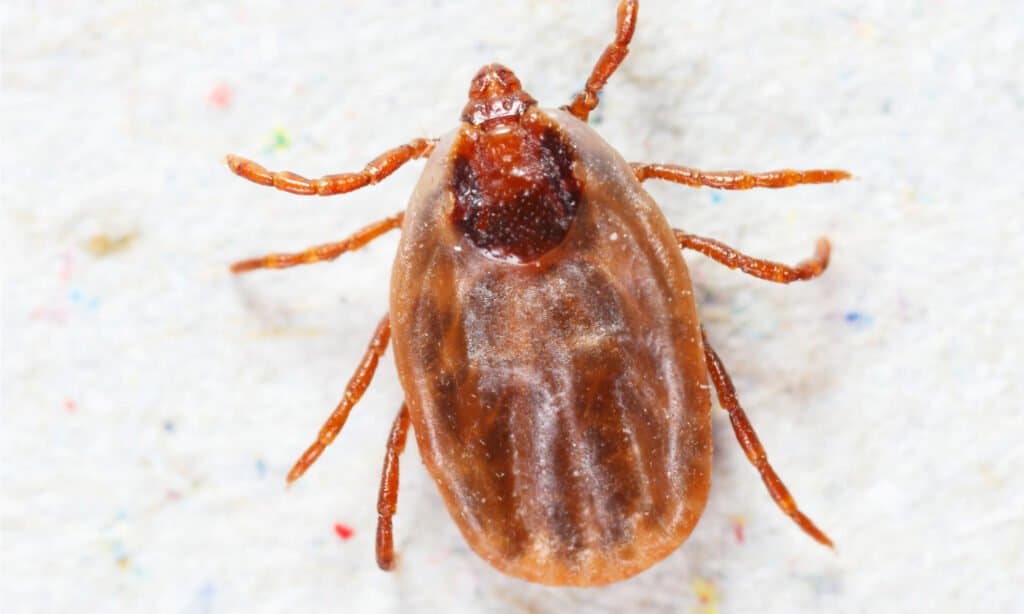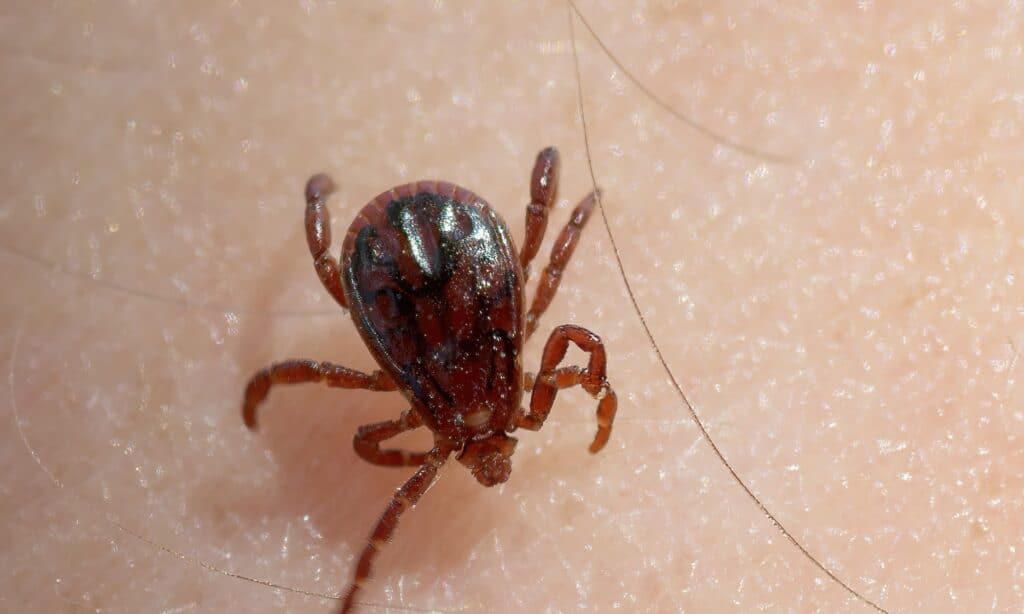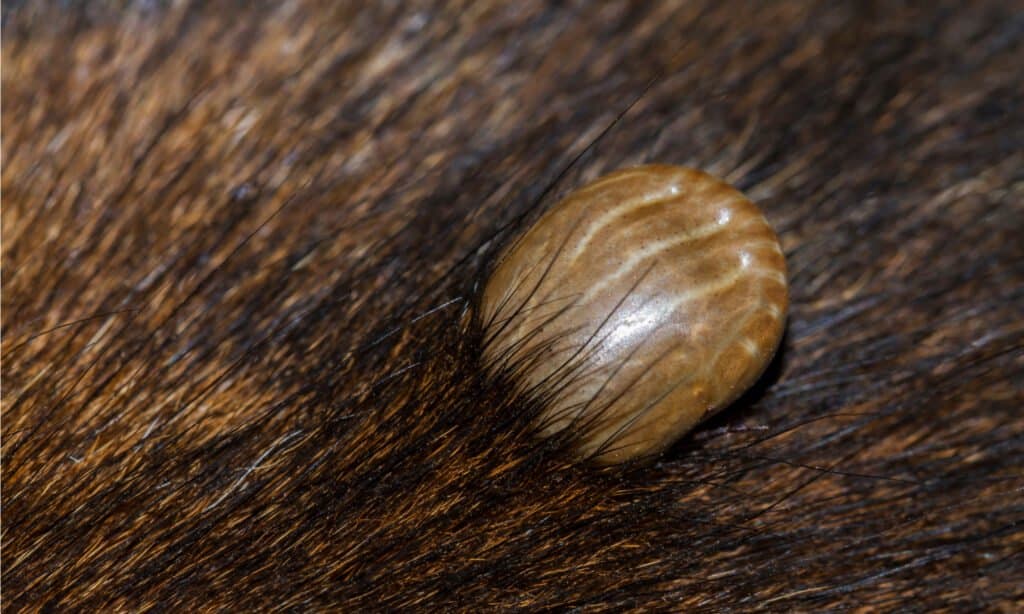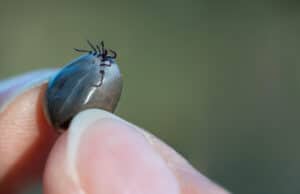Let’s say you’re planning a trip to the beautiful Hawaiian islands, or maybe you’re lucky enough to live in the Aloha state. You pack your sunscreen, your boogie board, and your tick repellent. Wait, are there actually ticks in Hawaii? Unfortunately, yes—even this island state in the middle of the Pacific Ocean is home to those tiny, blood-sucking invaders we all hate and fear. Luckily, Hawaii is home to only two types of tick, and one of those ticks feeds exclusively on animals, not humans.
Here, we’ll learn more about the two types of ticks living in Hawaii. Then, we’ll take a look at what ticks eat and how they sustain themselves. After that, we’ll go over the dangers of ticks and their bites and whether or not you should be worried. Finally, we’ll discuss what you should do to treat ticks in Hawaii and the steps you should take if you find a tick on your dog.
Types of Ticks in Hawaii
There are only two types of ticks in Hawaii; the brown dog tick and the spinose ear tick. The spinose ear tick feeds mostly on cattle, attaching to their ears, while the brown dog tick sticks mostly to dogs. Let’s take a more detailed look at these two ticks in Hawaii.
Brown Dog Tick (Rhipicephalus sanguineus)

The brown dog tick is a known vector for Rocky Mountain spotted fever and several dog-specific diseases.
©7th Son Studio/Shutterstock.com
Brown dog ticks are one of the two species of ticks in Hawaii. They’re most commonly found in association with dogs, in places like kennels, veterinary offices, or homes with dogs. Unlike other species of ticks, the brown dog tick actually spends most of its life indoors, preferably in or around dog beds or crates.
Brown dog ticks are red-brown, with narrow, almost rectangular bodies. When they feed (by attaching to the skin of a dog), their bodies engorge with blood. These ticks are known as three-host ticks, meaning they feed on one host per lifecycle. The brown dog tick has a different appearance during each phase of its life (larva, nymph, adult), which can make identification difficult.
Spinose Ear Tick (Otobius megnini)

The spinose ear tick has a global distribution that includes North America, Central and South America, Hawaii, India, and Africa.
©Mat Pound-USDA Agricultural Research Service Country-United States / Creative Commons – License
Spinose ear ticks are the other ticks in Hawaii. These ticks almost always feed on animals, though human bites occasionally happen. They’re known as soft-bodied ticks (whereas brown dog ticks are hard-bodied ticks) and take only one host in their lifetime. Unlike the brown dog tick, which feeds for a matter of days before falling off and finding a new host, the spinose ear tick feeds for a period of months.
As its name suggests, the spinose ear tick usually attaches to the host’s ear. Humans don’t have much to worry about when it comes to these ticks in Hawaii, though it is possible for spinose ear ticks to attach to dogs or even cats. Unlike the brown dog tick, the spinose ear tick is not a carrier of Rocky Mountain spotted fever or any dog-specific diseases.
What Do Ticks Eat?
Ticks are parasitic arachnids. They’re closely related to mites and even scorpions. They’ve been around for about 100 million years, and in all that time, they’ve changed very little. Today’s ticks feed on the same thing the ticks of one million years ago fed on; blood. Ticks in Hawaii are no exception; like all other ticks, they eat blood and nothing but blood. Because of this, they’re known as obligate hematophages (blood eaters).
Are Hawaii Ticks Dangerous?

Ticks carry and spread Lyme disease.
©iStock.com/RobertAx
Lyme disease is a bacterial infection that can affect almost any body system. Ticks carry Lyme disease and spread it to humans through their bites.
Ticks in Hawaii might be scary, but aside from the fear of having one attached to your canine companion, they present little threat to humans. Unlike other tick species, like the deer tick, brown dog ticks and spinose ear ticks do not spread Lyme disease. They very infrequently attach to humans, so there is little possibility of contracting a tick-borne illness while living in or visiting the Hawaiian Islands.
However, you should keep an eye out for them if you have dogs in the Aloha state, as ticks can and do attach to dogs and other animals.
How to Treat Ticks in Hawaii
If you find a tick attached to your body, the most important thing to do is remain calm. Ticks in Hawaii may be disgusting, but they’re not life-threatening. The chances are likely that the tick attached to you is very small, and it may not be engorged, so it may be hard to recognize. On dogs, they’re most likely to attach near the ears or sections of exposed skin or short fur.
First, wipe the area around the tick with an alcohol wipe. Then, place a pair of tweezers as close to the skin as possible and gently pull the tick out. It’s important not to squeeze too hard or pull too fast, as this may lead to fragmentation of the tick, which can cause complications. Once you have removed the tick, inspect it to ensure that the head is still attached to the body. Wipe the affected area with alcohol one more time, then monitor the bite for any redness or signs of infection.
If you have concerns, contact a medical specialist.
What to do if You Find a Tick on Your Dog

Ticks most often attach to dogs’ ears, bellies, or between their toes.
©Worraket/Shutterstock.com
The treatment for ticks in Hawaii, when they bite your dog, is much the same as it is if they bite you. Depending on your dog’s temperament, you may need to have another person assist you in removing the tick. If you’re uncomfortable removing an embedded tick from your dog, you can always make an appointment with a veterinarian.
The photo featured at the top of this post is © iStock.com/Goldfinch4ever
Thank you for reading! Have some feedback for us? Contact the AZ Animals editorial team.






